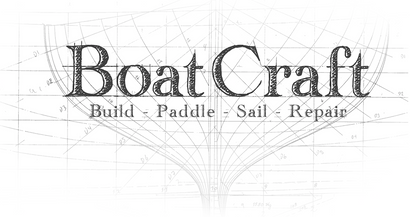Menu
-
- Home
-
Paddle Sports
-
Resin and Fibreglass
-
Marine
-
Transport
-
Specials
- blog
-
- 587-855-1304
- Login
-
CAD


West System G-flex 650 Plastic, Aluminum, Steel Epoxy
February 09, 2024 4 min read
West System G-glex 650 is a 1:1 mix ratio epoxy that can be used in many applications, but more specifically complex and hard to bond to surfaces such as Lexan, HDPE, LDPE, Aluminum and Steel. The reason that this is so valuable is that we can repair materials that would otherwise require plastic welding, welding or whole sale replacement of the damaged object by using G-flex epoxy. For applying fiberglass cloths or working with natural materials, almost any epoxy can be used depending on the builders intended use and life span of that object. When we move to plastics and metals there is far less material available to the hobby builder that is not only sold within the manufacturing industry. We can use G-flex to repair these materials, and the cost of doing the repair is very low, which makes repairing plastic canoes, aluminum rivetted boats, quad fenders and gas tanks, trailer fenders and canopies, car bumpers and trim, hot tubs and a whole range of other plastic and metal products possible. As always, read and follow the instructions on or in the box, do not assume anything about using epoxy, follow the mix ratio and the instructions on how to prep the surface for each material specifically.
First off, G-flex is a patented and independently tested epoxy, which means that it has been tested to prove that it can be used in these applications and the expected performance of this product is proven. These tests can be seen on Youtube by West System or other independent vendors videos (links below) on comparing them to other products commonly used in forge knife making, marine and high impact applications. This testing is also certified on the West System TDS and SDS sheets available on their website.
When bonding to plastics (HDPE, LDPE and ABS) the problem is the material is intended to be non-porous, we do not want our Tupperware, gas tanks or canoe hulls to leak which means that surface preparation is required when applying the resin. This offers a particular problem when trying to make adhesives stick to this surface, since the single most important purpose of the material is to not have material pass through it or stick to it. Most epoxies and polyesters will not stick to any plastic material, which is why we use plastic spreaders to spread resin and plastic sheets to protect our work surfaces. Sadly, some products are also using identical or similar plastics in the construction of their products, therefore, we cannot have lasting repairs due to delamination and instability of the adhesive. Gflex is formulated to bond to plastics, but there is one more step in preparing the surface that is little known but crucial to success. When preparing a surface most people would sand the surface and acetone wipe the surface contamination, this is standard practice for fiberglass, but when preparing plastic, you must flame treat the plastic to chemically prepare it for an adhesive. After the surface has been flame treated, the surface is wiped with isopropyl alcohol to decontaminate before glfex can be applied. It does not matter which adhesive you choose, when bonding to plastic scuff sanding the surface is not sufficient for bonding, which will lead to delamination or cracking. This is not a resin failure, it’s a preparation of the surface failure.
“When preparing plastic, you must flame treat the plastic to chemically prepare it for an adhesive.”
When bonding aluminum and steel it is most common to weld or rivet the material together, which is always the best way to repair and maintain these craft. If the rivets or welds have to be repaired the can be fixed with G-flex with proper surface preparation. Not every epoxy can be used for bonding to aluminum and steel, only purpose-based epoxy like G-flex. When aluminum is rivetted it is very tight but over time gaps and loosening the joint, they will begin to leak, and this will get worse over time as water freezes it will continue to expand the joint. Aluminum needs to be properly surface prepared with a wire brush and solvent wipe to decontaminate the surface and then epoxy is injected in the joints. The reason we will use G-flex is that this epoxy has enough flex to match the expansion and contraction of the material that it is bonded to, aluminum hulls are very flexible and most adhesives will fail if put under too much stress. This is the same issue when bonding to steel if welding is not an option, like when bonding knife handles onto a knife blade. In one of the videos cited below a knife maker tests the G-flex epoxy in a range of crush, strength, elongation and static weigh tests to see if the G-flex will fail. This is a high impact adhesive that works for knife and axe handles. This is why G-flex can be used to bond to steel and aluminum in high impact situations and tough to bond to surfaces.
The reason for purchasing West System 650 G-flex is abundantly clear when repairing plastics or aluminum, but the hidden secret is that it is an inexpensive and permanent repair. It is sand-able and can be painted, so the repair can be refinished like new. This product is available and inexpensive, so it can be used for most projects for inexpensive repairs.
Youtube Videos:
https://www.youtube.com/watch?v=tgHUFNtUFes
https://www.youtube.com/watch?v=UCOziXeTXzY
https://www.youtube.com/watch?v=y4rZFm3XBtI
https://www.youtube.com/watch?v=V46vwLNIp5M
https://www.westsystem.com/products/g-flex-650-toughened-epoxy/
Leave a comment
Comments will be approved before showing up.
